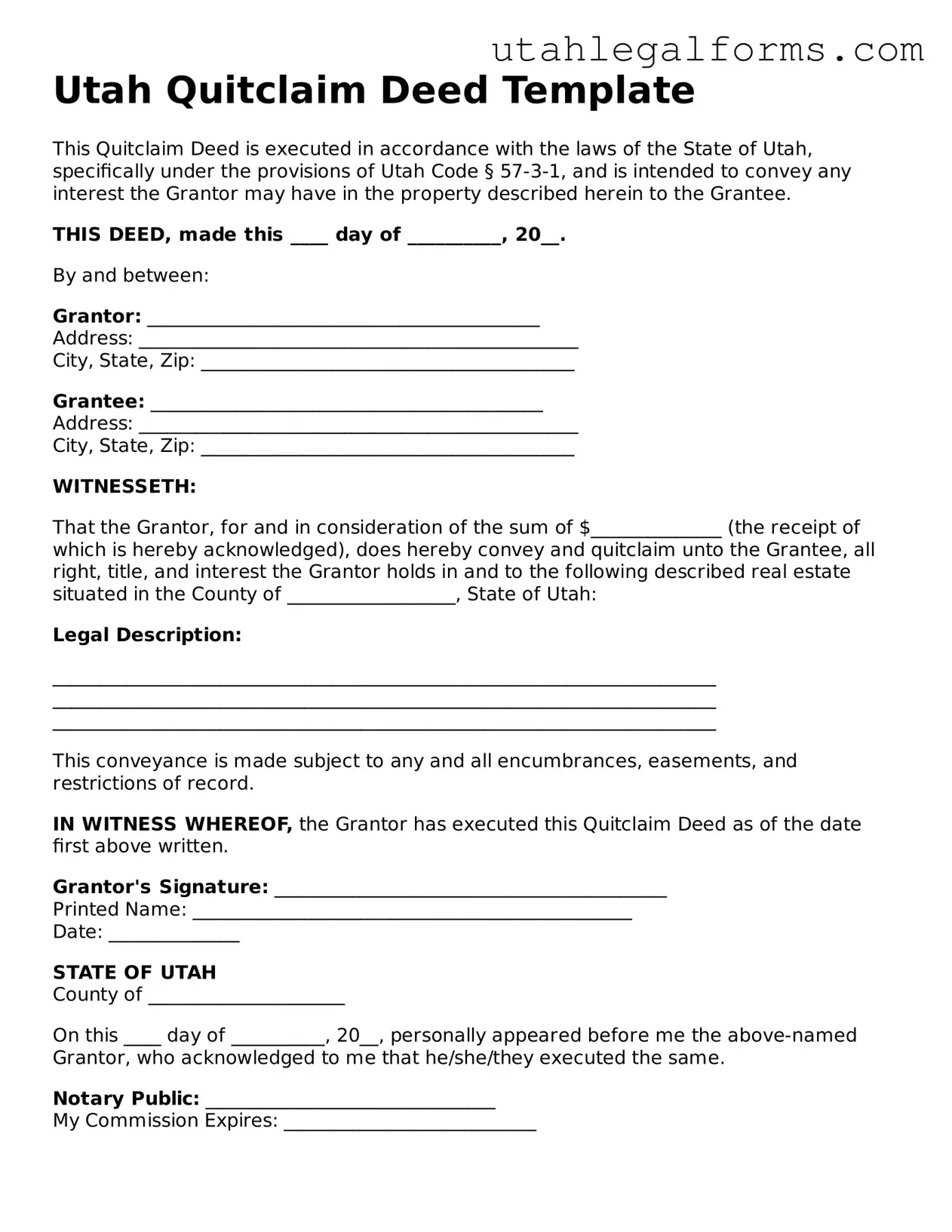Official Quitclaim Deed Form for Utah State
A Quitclaim Deed is a legal document that transfers ownership of real estate from one party to another without any guarantees about the property’s title. This form is often used in situations where the parties know each other, such as family transactions or divorces. To start the process of transferring property, fill out the form by clicking the button below.
Access Quitclaim Deed Now
